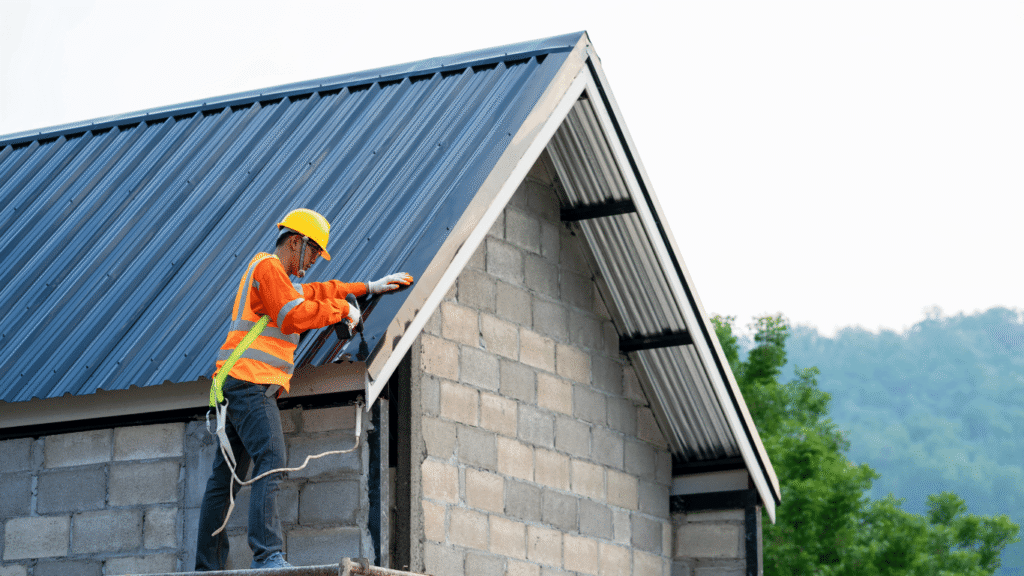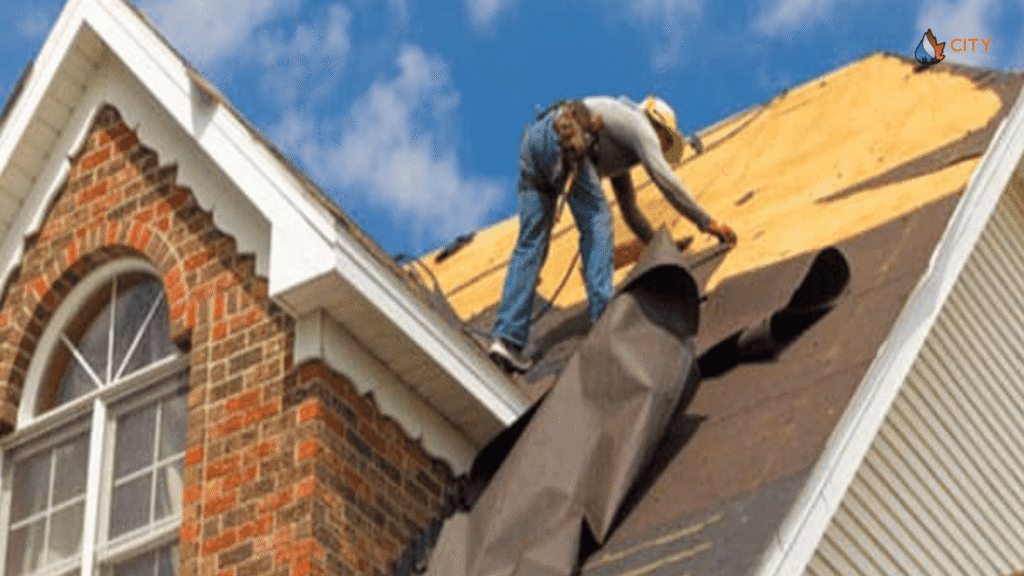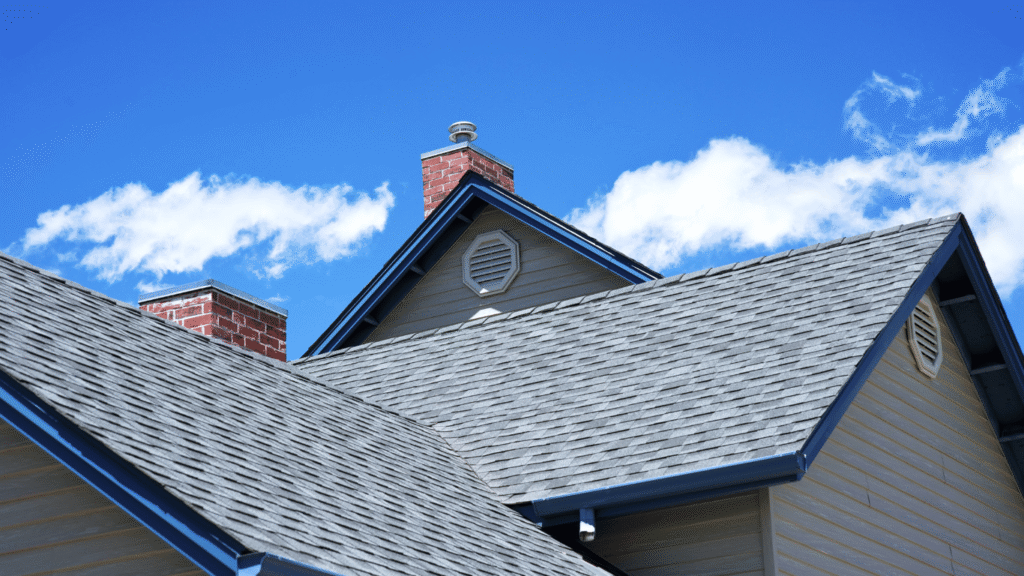Understanding the slope of a roof is essential for both homeowners and professionals. Roof slope determines how well rainwater drains, how much weight a roof can carry, and how gutters should be installed. If the slope is too flat, water can pool and cause leaks.
If it is too steep, it may require larger gutters to handle the faster water flow. For homeowners in London and Surrey, where heavy rain and changing weather are common, knowing how to calculate a roof slope is a practical skill.
This guide walks you through everything you need to know about measuring roof slope. Whether you plan to check your own roof or simply want to understand what contractors are referring to, the steps below will make the process clear and straightforward.
What Is Roof Slope?
Roof slope, also called pitch, describes the angle of a roof. It tells you how much the roof rises vertically for every unit of horizontal run. In most cases, slope is expressed as a ratio, such as 4:12. This means the roof rises 4 inches for every 12 inches of horizontal distance.
Roof slope can also be shown as:
- Degrees (the actual angle of the roof)
- Percentage (rise divided by run, multiplied by 100)
Each format helps in different ways. For example, builders often use ratios, while engineers may prefer degrees or percentages.
Tools You Need to Measure Roof Slope
Before you begin, gather the right tools. Using the proper equipment will make the process safer and more accurate.
- Tape measure or laser distance measure
- Spirit level at least 12 inches long
- Roofing square or carpenter’s square
- Pencil and notepad for recording numbers
- Safety gear: sturdy ladder, gloves, and if possible, a safety harness
These items allow you to measure both directly on the roof and from inside the attic, depending on which method feels safer for you.

Step-by-Step Guide : how to calculate roof slope
Method 1 – Measuring on the Roof
- Place your ladder on firm ground and climb carefully.
- Set the spirit level horizontally on the roof surface, ensuring it extends 12 inches from the starting point.
- Measure vertically from the end of the level up to the roof surface. This gives you the “rise.”
- Record the rise against the 12-inch run. If the rise is 6 inches, your slope is 6:12.
This is the most common method and provides an accurate reading when done carefully.
Method 2 – Measuring from the Attic
If climbing onto the roof feels unsafe, you can measure slope from inside.
- Locate an exposed rafter in your attic.
- Place the spirit level against the underside of the rafter. Mark a 12-inch horizontal run.
- From the 12-inch mark, measure vertically to the rafter.
- The result is your rise. If it measures 8 inches, the slope is 8:12.
This method avoids the risks of working outdoors and is particularly useful in rainy or icy conditions.
Method 3 – Using a Smartphone App or Digital Tool
Technology has made roof slope calculations easier. Many smartphone apps and digital angle finders can provide an instant slope measurement by aligning the device with the roof.
While convenient, keep in mind that apps may not always be as precise as manual methods. They are best used as a quick check rather than the only measurement.

Converting Roof Slope Measurements
Once you have the slope ratio, you can convert it into degrees or percentages. This is helpful if you are reading technical documents or comparing measurements with professionals.
- To degrees: Use a scientific calculator or online converter. For example, a 6:12 slope equals about 26.6 degrees.
- To percentage: Divide rise by run and multiply by 100. For example, 6 ÷ 12 = 0.5, or 50%.
Here is a simple reference table:
| Slope Ratio | Degrees | Percentage |
| 3:12 | 14° | 25% |
| 4:12 | 18° | 33% |
| 6:12 | 26.6° | 50% |
| 8:12 | 33.7° | 67% |
| 10:12 | 39.8° | 83% |
Why Roof Slope Matters for Gutters and Drainage
The slope of your roof directly affects how your gutters perform.
- Steep roofs shed water quickly. This means gutters must be wide enough and securely fixed to handle the heavy flow.
- Low-slope roofs may allow water to collect, increasing the risk of leaks, moss growth, and clogged gutters.
- Flat roofs often require special drainage solutions and more frequent gutter cleaning.
In areas like London and Surrey, with frequent rain, the wrong gutter setup can lead to water overflowing and damaging walls or foundations. This is why professional inspection and maintenance are so important.
Common Mistakes When Calculating Roof Slope
Measuring roof slope is simple, but small errors can lead to big miscalculations. Some common mistakes include:
- Measuring on uneven ground, leading to inaccurate readings
- Holding the level incorrectly, so the run is not truly horizontal
- Forgetting to record measurements immediately
- Ignoring safety and rushing the process
Being careful with these steps ensures that your measurements are trustworthy.

When to Call a Professional
Although homeowners can measure roof slope on their own, there are situations where calling a professional is the safer and smarter choice:
- The roof is too steep or slippery to stand on
- You need slope details for major gutter replacement or roof repairs
- You notice signs of water damage and need an expert opinion
At City Guttering London, our team can provide instant telephone inspections and, if needed, visit your property quickly. With over 200 five-star reviews, homeowners across London, Surrey, and Hampshire trust us to deliver accurate assessments and reliable solutions.
Final Thoughts
Learning how to calculate a roof slope gives you valuable insight into your home’s structure. It helps you understand drainage needs, spot potential issues, and have more informed conversations with contractors.
That said, slope measurements should never come at the cost of safety. If you are unsure, always let a professional take care of it. With our fast response times and expert service, City Guttering London is here to ensure your roof and gutters are in the best possible condition.





